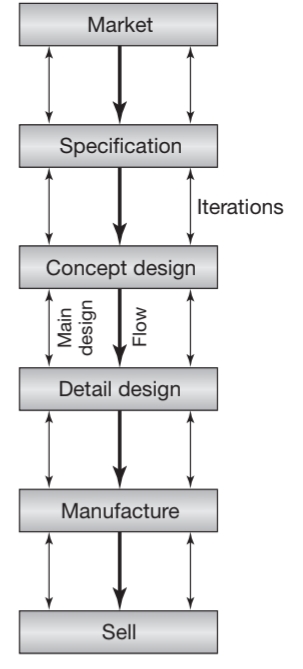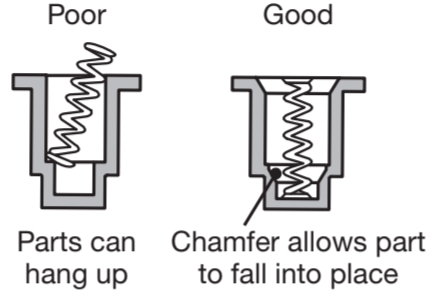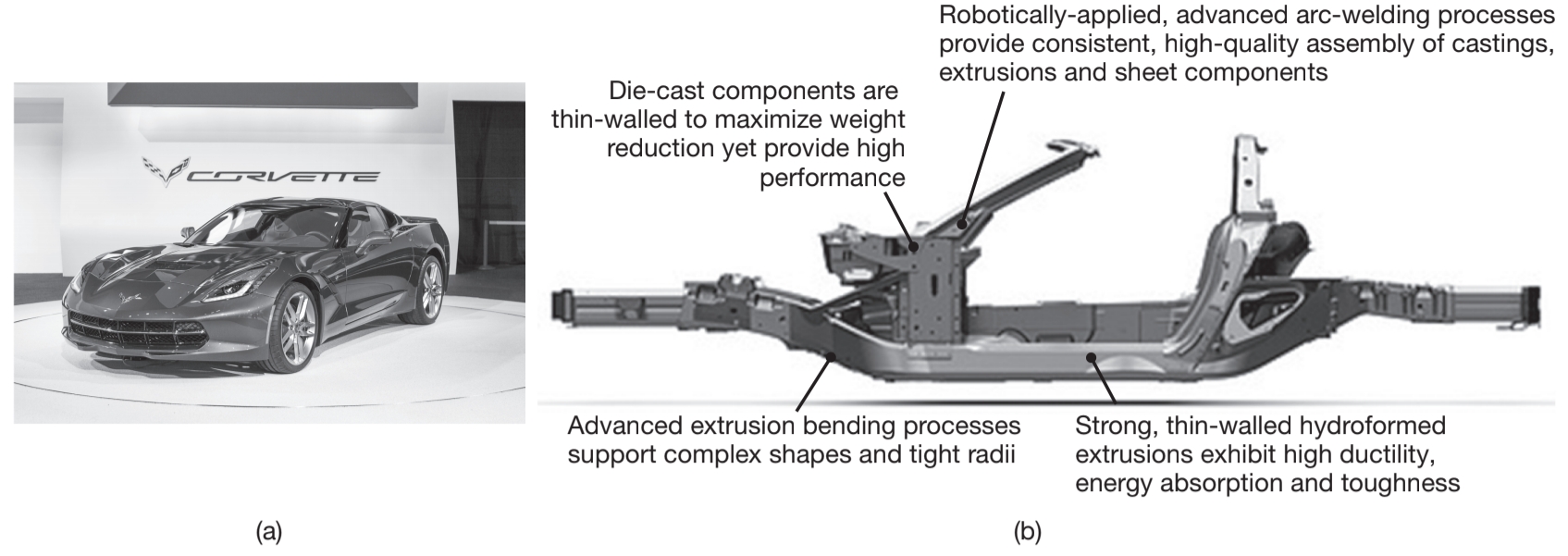What is manufacturing?
From (Kalpakjian & Schmid, 2016):
Manufacturing is the process of converting raw materials into products; it encompasses the design an manufacturing of goods using various production methods and techniques.
Manufacturing may produce discrete products, meaning individual parts, such as nails, rivets, bolts, and steel balls. On the other hand, wire, sheet metal, tubing, and pipe are continuous products, that may then be cut into individual pieces and thus become discrete products.
Manufacturing must be responsive to several demands and trends:
- A product must fully meet design requirements, specification and standards.
- It must be manufactured by the most economical and environmentally friendly methods/
- Quality must be build into the product at each stage, from design to assembly, rather than relying on quailty testing after the product is made.
- Production methods must be sufficiently flexible to respond to constantly changing market demands’ types of products, production rates and quantities.
- New developments in materials, production methods, and computer integration of both technological and managerial activities must constantly be evaluated with.
- Manufacturing activities must be viewed as a large system, each part of which is interrelated.
- A manufacturer must work with the customer for timely feedback for continuous product improvement.
Product Design

General product flow, from market analysis to selling the product and depicting concurrent engineering.
Product design is a critical activity because it has been estimated that, generally,
Design for Manufacture, Assembly, Disassembly, and Service
Design and manufacturing should never be viewed as separate disciplines and activities. Each part or component of a product must be designed so that it not only meets design requirements and specifications but also so it can be manufactured economically and with relative ease. This broad concept is called design for manufacture (DFM).

Redesign of parts to facilitate automated assembly.
Selecting materials
An increasingly wide variety of materials is now available, each having its own characteristics, composition, applications, advantages, limitations, and costs. The major types of materials used in manufacturing today are:
- Ferrous metals: carbon steels, allow steels, stainless steels.
- Nonferrous metals and alloys: aluminum, magnesium, copper, nickel, superalloys, titanium.
- Plastics: thermoplastics, thermosets, and elastomers.
- Ceramics: glass ceramics, glasses, graphite, diamond.
- Composite materials: reinforced plastics, metal matrix and ceramic-matrix composites.
Material substitution
As new or improved materials continue to be developed, there are improtant trends in their selection and application. For example, by demonstrating steel’s technical and economics advantages, steel producers are countering the increased use of plastics in automobiles and aluminum in beverage cans. Likewise, aluminum producers are countering the use of various materials in automobiles.

The C7 Corvette sports car, using an all-aluminum chassis which is lighter and stiffer than the C6 Corvette; The aluminum body structure, showing various components made by extrusion, sheet forming and casting processes.
Selecting Manufacturing Processes
A wide range of manufacturing processes are available to produce a wide variety of parts, shapes, and sizes. Note also that there is often more than one method of manufacturing a particular part from a given material.

Various methods of making a simple part:
casting or powder metallurgy; forging or upsetting; extrusion; machining; and joining two pieces.